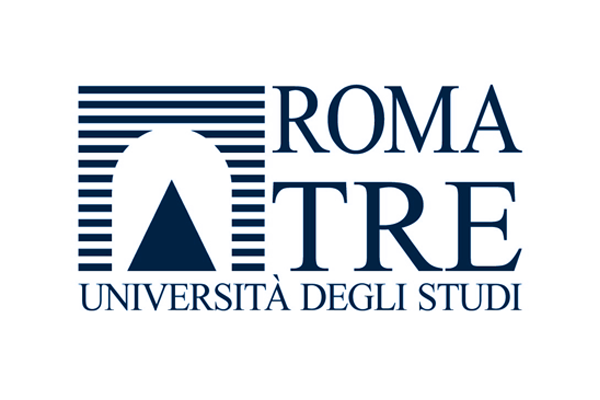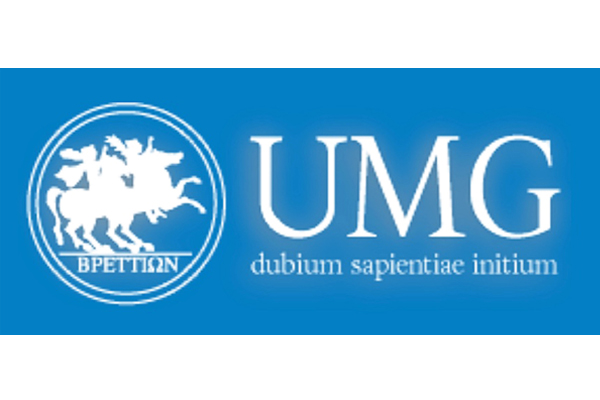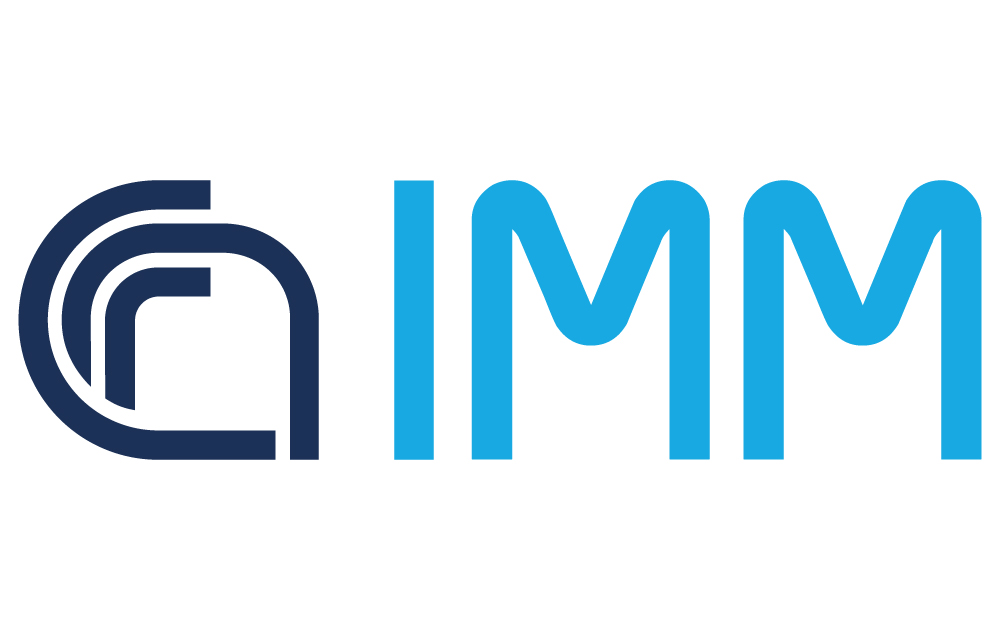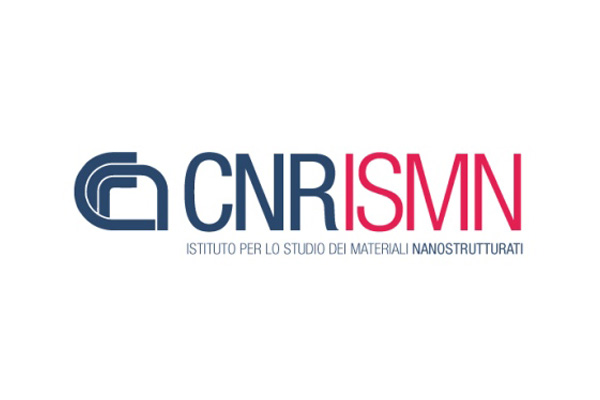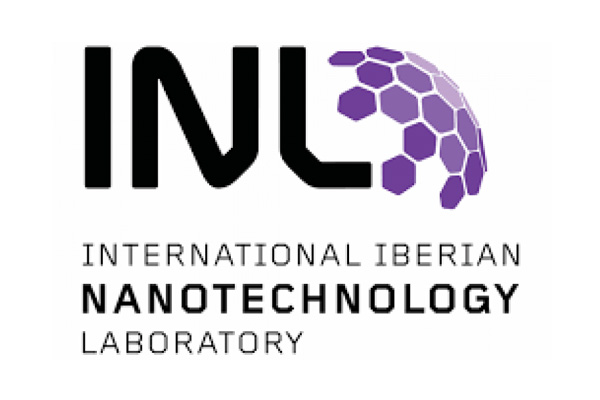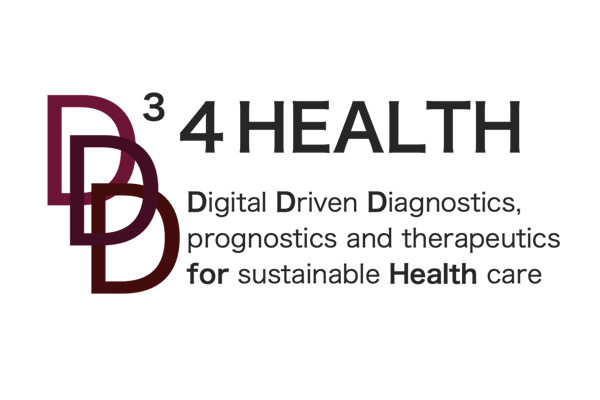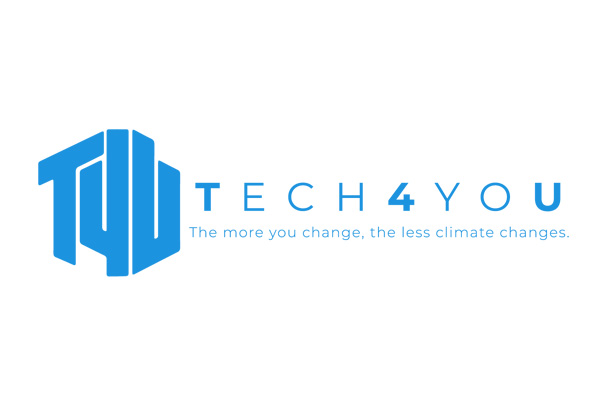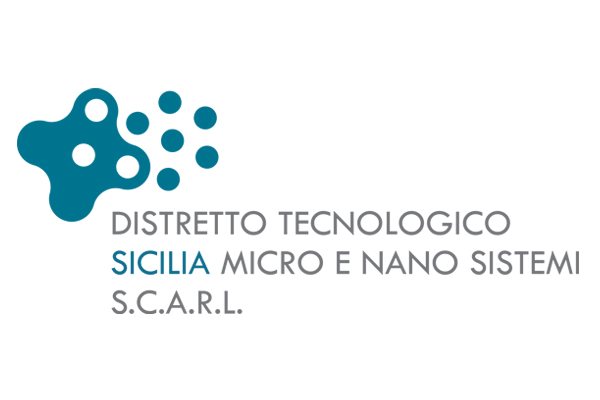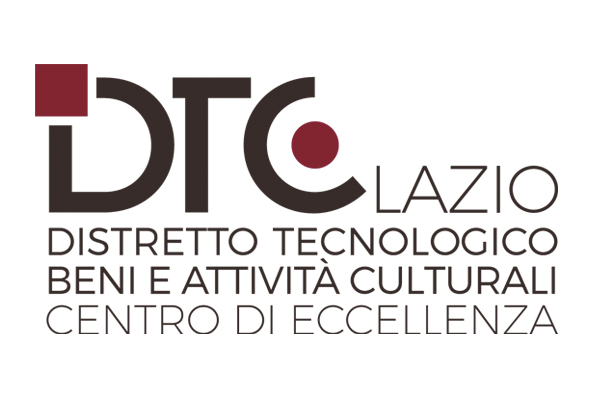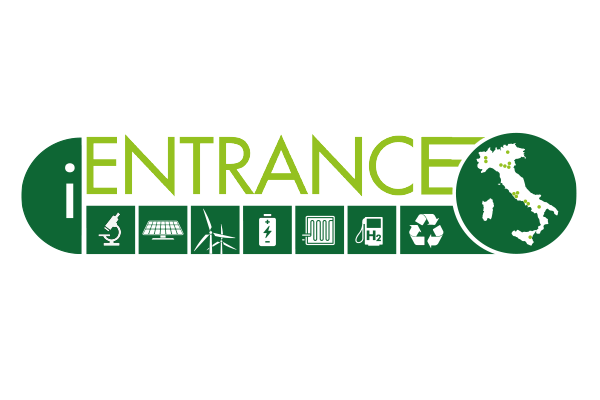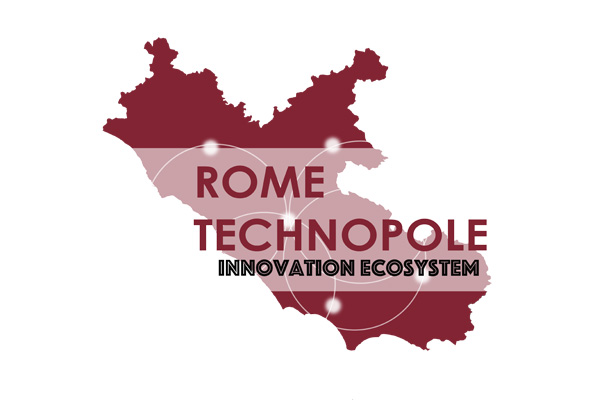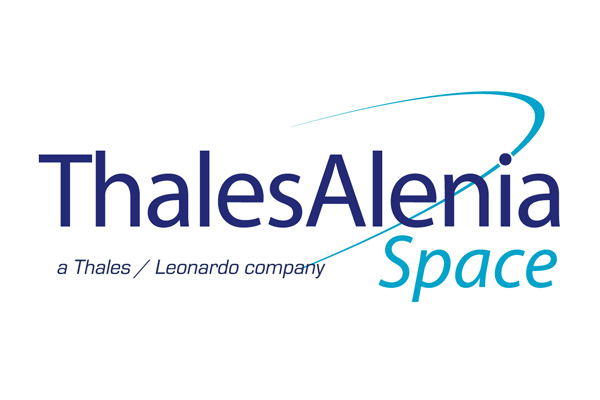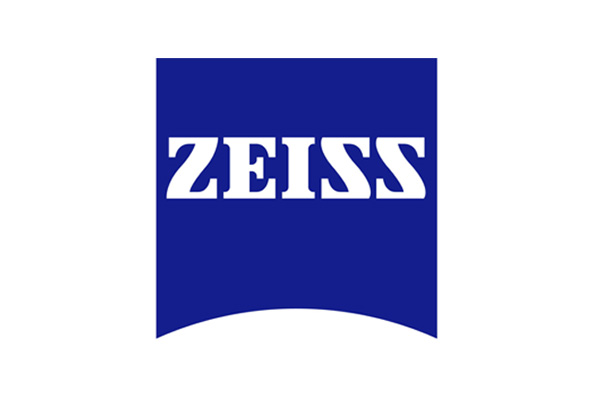|
PNRR event iENTRANCE@ENL September 10 - 11 - 12 - 13 |
||||||||||||
 |
||||||||||||
|
The "Infrastructure for Energy Transition and Circular Economy @ EuroNanoLab" (iENTRANCE@ENL) is a key initiative under Italy's National Recovery and Resilience Plan (NRRP), specifically within Mission 4: Education and Research, Component 2: From Research to Enterprise, Investment 3.1. This initiative aims to promote innovation, facilitate technology diffusion, enhance skills, and support the transition to a circular economy. The primary goal of iENTRANCE@ENL is to become Italy's leading research infrastructure in the following areas: Nanomaterials for Energy: developing advanced nanomaterials to improve energy efficiency and sustainability. Processes and Devices for Green Energy Production, Storage, and Management: innovating technologies that support renewable energy generation, efficient storage solutions, and effective energy management. Micro- and Nanoscale Characterization and Metrology: enhancing techniques for measurement and analysis at the micro and nanoscale to support advanced research and development. Technologies for Device and System Realization: creating and implementing new technologies for the development of advanced devices and systems. The infrastructure is coordinated by the National Research Council (CNR) and includes the National Metrology Institute of Italy, the Polytechnic University of Turin, the University of Bologna, Sapienza University of Rome, and the University of Roma Tre. CNR's representation spans several institutes: IMM Bologna (coordinator of the Research Infrastructure) and Catania, ISMN Bologna, NANO Modena, IMEM Parma, ISM Roma and Potenza, iPCB Pozzuoli, and STEMS Napoli. The consortium is organized into six geographical nodes: Bologna, Turin, Rome, Naples, Potenza, and Catania. Each node is internationally recognized for its expertise in complementary research areas, coordinated by a central hub. The initiative will be developed along three main project phases: Design and Implementation (2022-2024): establishing the operational and management backbone of the Research Infrastructure. A key component will be the digital infrastructure, based on FAIR principles. Ramp-Up (2024-2025): opening the facilities to users from academia and industry. New instrumentation will be acquired and commissioned to enable cutting-edge research. Access policies will incorporate Open Science best practices, emphasizing the importance of excellent science. In-house research will drive technologies beyond the current state-of-the-art to ensure sustainability after the NGEU Project. Full Operation: for at least 10 years, Italy will have a distributed, integrated, and fully interoperable structure for Clean Energy Transition research up to Technology Readiness Level (TRL) 4. Collaboration with other NGEU infrastructures and research innovation programs will ensure Italian competitiveness, autonomy, and sovereignty in this field, covering the entire value chain from low to high TRL. In the context of the Nanoinnovation 2024 activities, the iENTRANCE@ENL Team has played a significant role in organizing and supporting the events listed below, either fully or partially. |
||||||||||||
|
Scientific Commettee of iENTRANCE@ENL for Nanoinnovation 2024 Alessia SANNA |
||||||||||||
| September 10 | ||||||||||||
| 11:30 - 13:00 ROUND TABLE PLATFORMS and OPEN ACCESS RESEARCH INFRASTRUCTURES for the TECHNOLOGY TRANSFER |
||||||||||||
| Coordinators: Vittorio MORANDI, ISMN-CNR and Marco ROSSI, Sapienza University of Rome |
 |
 |
||||||||||
| Moderator: Chiara LICO, Journalist, writer and TV presenter | 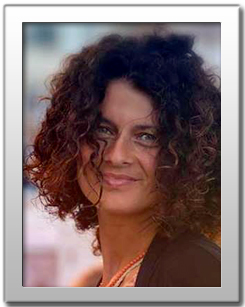 |
|||||||||||
| In recent years, the significance of research infrastructures, as providers of advanced instrumentation and specialized skills, has dramatically increased due to the necessity for optimal management of highly complex and costly instruments. In an ever-evolving landscape of scientific and technological advancement, the pivotal role of research infrastructures is undergoing a significant transformation. These infrastructures are not just repositories of cutting-edge instrumentation and specialized expertise; they have become catalysts for innovation, driving progress through optimal management of high-cost, complex equipment. This shift in research activity management, where laboratory results must be integrated with experiments conducted in large, publicly accessible research infrastructures, presents not only new opportunities but also new and often uncharted challenges. Optimizing interactions among various structures and research teams, managing intellectual property, and coordinating time and access modes are essential aspects. The creation of decentralized research infrastructures, organized as a network of independent laboratories, adds another layer of complexity. Furthermore, recent funding initiatives under the Next Generation EU Plan (PNRR) have significantly accelerated investments in Italy in both Research Infrastructures and Technological Infrastructures for Innovation. It is crucial to align these new initiatives with existing national efforts in a coordinated, inclusive, and synergistic manner, promoting best practices and effective governance. The Round Table aims to be one occasion to facilitate a dialogue among all stakeholders involved in the establishment, management, and operation of research infrastructures, and those potentially interested in utilizing these infrastructures. It will provide information on both technological and organizational-managerial characteristics essential for creating a network of research infrastructures while collecting opinions and suggestions on the most effective management approaches. The themes on the table span from the needs in terms of operative structure, operator skills, to the instrument characteristics and their evolution strategy. By doing so, we hope to further stimulate the interests of operators, fostering a greater awareness of the potential offered by individual infrastructures and their integration. Overall, this initiative aims to create a collaborative environment to address the pressing challenges faced by the research community in managing and optimizing the use of research infrastructures. By sharing knowledge, experiences, and suggestions, we can work towards a more integrated and efficient network of research infrastructures, ultimately contributing to the acceleration of technology transfer and innovation. The discussion at the beginning of the Round Table will be started by the panelists listed below. Participation is open and free upon online registration. Your participation and input are invaluable in shaping the future of research and technology transfer in Italy and beyond. We invite you to be part of this seminal discussion, as we collaboratively envision the future of research infrastructures in an integrated, efficient, and innovative manner. If you wish to join the list of panelists, kindly forward your request to the coordinators: Vittorio Morandi ( |
||||||||||||
| INVITED PANELISTS | ||||||||||||
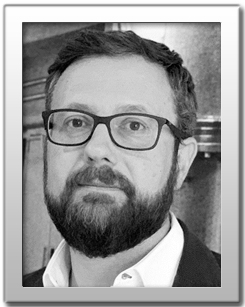 |
Pietro ASINARI INRiM, Scientific Director |
|||||||||||
 |
Massimo BERSANI Fondazione Bruno Kessler - FBK |
|||||||||||
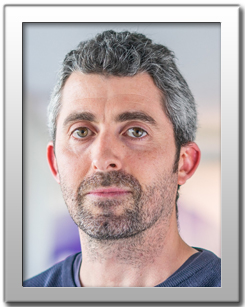 |
Andrea CAPASSO INL - International Iberian Nanotechnology Laboratory, Braga, Portugal |
|||||||||||
 |
Ennio CAPRIA ESRF, Grenoble - FR, Deputy Head of Business Development |
|||||||||||
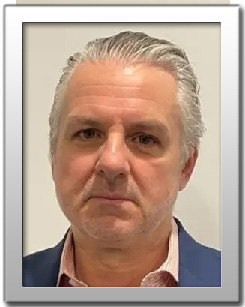 |
Massimo CARNELOS (to be confirmed) MAECI, Capo dell'Ufficio Innovazione, start-up e spazio - DGSP Uff. XI |
|||||||||||
 |
Marziale FEUDALE Thales Alenia Space - Italia, CTO, Senior Expert, R&D&T and Horizon EU |
|||||||||||
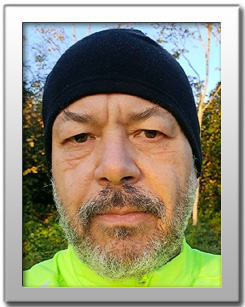 |
Alessandro GARIBBO Leonardo, Head of Universities and Research Centers Coordination |
|||||||||||
 |
Michele MAZZOLA Ministero dell’Università e della Ricerca Ufficio III - Internazionalizzazione della Ricerca |
|||||||||||
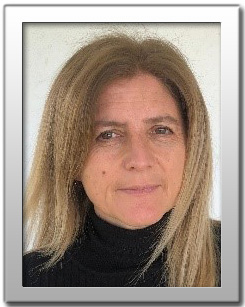 |
Giulia MONTELEONE ENEA, Dip. Tecnologie energetiche e fonti rinnovabili, Direttrice |
|||||||||||
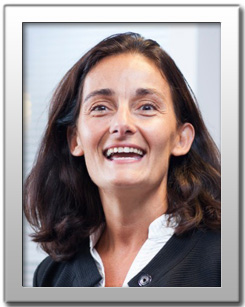 |
Francesca NATALI Meta Group, Fund Managing director and Senior expert |
|||||||||||
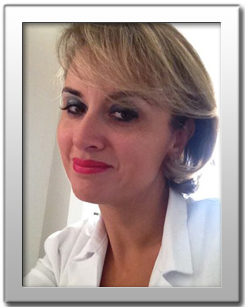 |
Donatella PAOLINO University of Magna Grecia & Tech4You Scarl |
|||||||||||
 |
Fabrizio PIRRI Polytechnic University of Turin, Vice Rector for Research Model and Infrastructure Development |
|||||||||||
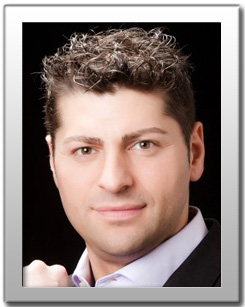 |
Rudy Alexander ROSSETTO Professional Order of Biologists in Lombardy, President |
|||||||||||
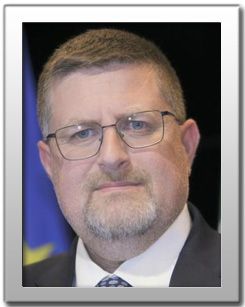 |
Roberto SANTANGELO (waiting confirmation) Regione Abruzzo, Assessore |
|||||||||||
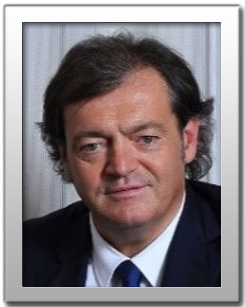 |
Massimo SCACCABAROZZI Direttore Think Tank on Radar Fondazione Menarini - Presidente Sezione Farmaceutica e Biomedicale Unindustria Lazio |
|||||||||||
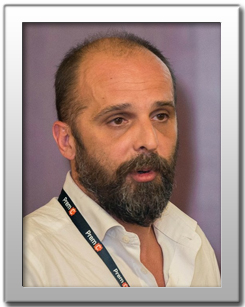 |
Giovanni TOSI UniMORE, Nanomedicine Platform Coordinator and Secretary of the European Technology Platform on Nanomedicine (ETPN) |
|||||||||||
| September 11 | ||||||||||||
| 09:00 - 10:30 SCHOOL ON NANOTECHNOLOGIES: processes and applications to sensors and actuators |
||||||||||||
| Organized by | ||||||||||||
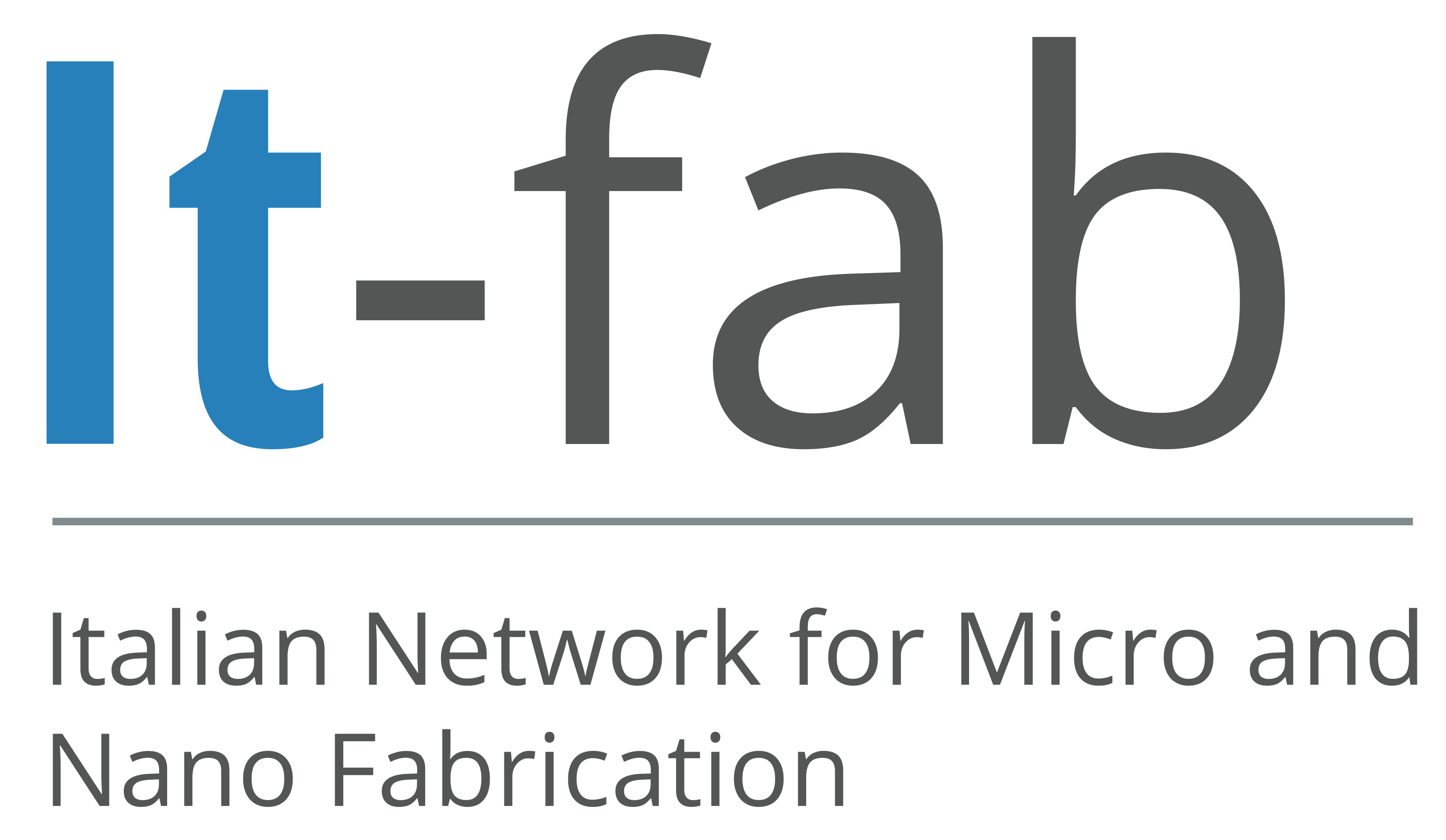 |
||||||||||||
| Chairs: Vittorio MORANDI, CNR-ISMN & Lorenza FERRARIO, FBK | ||||||||||||
| According to the increasing request of STEM skills, the school keeps, for the sixth year, offering a great opportunity to understand how nanodevices are studied, designed, fabricated and controlled. The course is dedicated to Master degree and Ph.D students, as well as to scientists working in the wide field of micro- and nano-technology, with attention to both planar and 3D technologies. Besides the lectures dedicated to single technology steps, building blocks of the silicon-based micro- and nano-fabrication technologies, there will be sessions dedicated to devices application areas. Especially in nanoscience, where results require huge amounts of time and resources, enhance research results requires mastering data and their management. The European Community, and the EU funded projects, ask to share information according to open and standardized models in order to fasten research to innovation times. The school will offer talks on the FAIR data management paradigm, today massively diffused in the scientific community. The school is organized by It-fab (http://itfab.bo.imm.cnr.it/), the Italian network for Micro and Nano Fabrication research infrastructures. | ||||||||||||
| 09:00 09:15 |
Welcome and introduction Lorenza FERRARIO FBK |
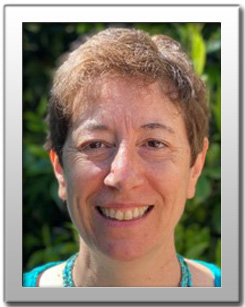 |
||||||||||
| 09:15 09:45 |
PNRR Infrastructures, RIANA, ENL updates Vittorio MORANDI CNR-ISMN |
 |
||||||||||
| 09:45 10:30 |
Best practices and lessons learned for managing reproducible processes in medium-sized research Clean rooms Giulia APRILE INRiM |
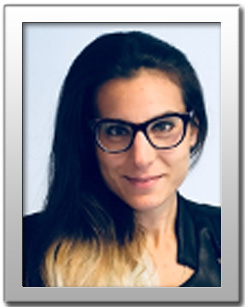 |
||||||||||
| 09:00 - 10:30 Special Event I YOUNGINNOVATION SESSION Next-generation semiconductor devices for power electronics applications |
||||||||||||
| Chair: Simonpietro AGNELLO, University of Palermo | ||||||||||||
| The session will delve into the forefront of semiconductor technology, showcasing innovative advancements that are set to revolutionize the field of power electronics. This session will bring together experts to discuss the latest developments in semiconductor materials, device architectures, and fabrication techniques. This session aims to foster collaboration and knowledge exchange, providing a platform for discussing the future directions of semiconductor technology in power electronics. Participants will leave with a comprehensive understanding of how next-generation semiconductor devices are poised to drive innovation and efficiency in power electronics applications. | ||||||||||||
| SE.I.1.1 TT.I.H.1 |
Introductive Keynote Filippo GIANNAZZO - CV CNR-IMM New devices based on 2D materials integrated on wide-bandgap semiconductors |
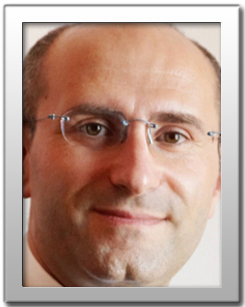 |
||||||||||
| SE.I.1.2 TT.I.H.2 |
Fiorenza ESPOSITO - CV CNR-IMEM Liquid precursor-based Chemical Vapor Deposition and Transfer of Monolayer MoS2 on GaN |
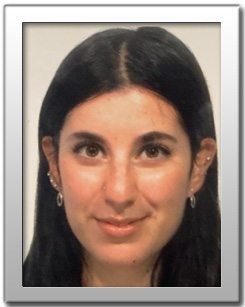 |
||||||||||
| SE.I.1.3 TT.I.H.3 |
Francesca MIGLIORE - CV University of Palermo Photoluminescence enhancement in 1L-MoS2 by thermal treatments |
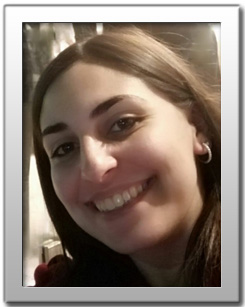 |
||||||||||
| SE.I.1.4 TT.I.H.4 |
Umberto DELLASETTE - CV CNR-NANOTEC Nanostructured Perovskites: Single Crystals for smart Optics and Optoelectronics |
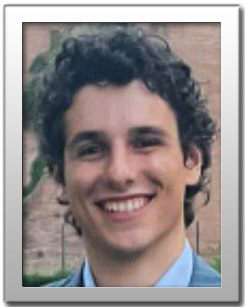 |
||||||||||
| SE.I.1.5 TT.I.H.5 |
Francesca SANTANGELI - CV Sapienza University of Rome Giant bandgap tuning of InN nanowires by post-growth Hydrogen irradiation for creation of tunable quantum dots |
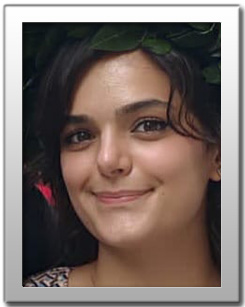 |
||||||||||
| 11:30 - 13:00 Special Event I YOUNGINNOVATION SESSION Composite materials for electrochemistry SE.I.4 - TT.II.I |
||||||||||||
|
Chair: Mauro PASQUALI, Sapienza University of Rome
|
||||||||||||
| Cutting-edge renewable energy conversion technologies demand advanced electro- and photoelectrocatalysts, but traditional development methods are slow and time-consuming. High-throughput methodologies facilitate rapid synthesis and screening of material libraries, while operando techniques, such as X-ray absorption spectroscopy, offer real-time insights into catalyst behavior under operational conditions. This innovative approach accelerates the discovery of new materials and deepens our understanding of their performance, propelling the advancement of next-generation energy technologies. | ||||||||||||
| SE.I.4.1 TT.II.I.1 |
Introductive Keynote Raffaello MAZZARO University of Bologna Novel approaches for the development of electro- and photoelectrocatalysts |
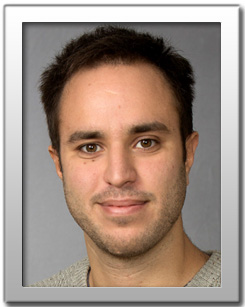 |
||||||||||
| SE.I.4.2 TT.II.I.2 |
Giulia GIANOLA - CV IIT Iron-Nitrogen-Carbon Catalysts by Different Synthesis Approaches for Efficient Oxygen Reduction Reaction in Fuel Cells Applications |
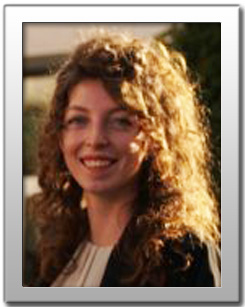 |
||||||||||
| SE.I.4.3 TT.II.I.3 |
Jaimon CHONEDAN JOHNSON - CV CNR-IMM Fabrication of Electrodes using High Surface Area 3D Graphene Substrates |
 |
||||||||||
| SE.I.4.4 TT.II.I.4 |
Alessia FORTUNATI - CV IIT CO2 electroreduction to CO in a membrane electrode assembly cell configuration for process scaling up |
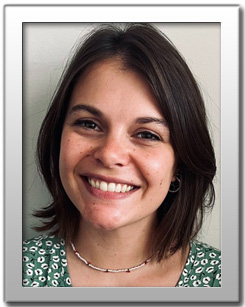 |
||||||||||
| SE.I.4.5 TT.II.I.5 |
Nicolò ROSSETTI - CV University of Padova Dual-Coordinated Nickel Single Atoms Stabilized in a Triazine-thiadiazole Based Organic Polymer for the Oxygen Evolution Reaction |
 |
||||||||||
| WS.VII WIDE-BANDGAP SEMICONDUCTORS AND HETEROSTRUCTURES FOR POWER AND RF ELECTRONICS September 11 |
||||||||||||
| Co-organized with IMM-CNR & IENTRANCE | ||||||||||||
|
WORKSHOP COMMITTEE Filippo GIANNAZZO, IMM-CNR |
||||||||||||
| Due to their outstanding physical properties, wide-bandgap (WBG) semiconductors, such as silicon carbide (SiC) and gallium nitride (GaN), are the materials of choice for high-power and high frequency electronics, with a broad range of applications in strategic fields, like electric vehicles, power conversion for renewable energies, aerospace, telecommunications, owing to this strategic role, European Union recently funded, through the Chips-JU, the realization of a Pilot line dedicated to WBG semiconductor technology. This workshop will provide an opportunity for companies, R&I centres, and universities to learn about recent developments and open challenges in WBG and ultra-WBG (Ga2O3) materials and technology. Advanced characterization methods specifically optimized for these material systems and related devices will be presented. Finally, new opportunities offered by the integration of 2D materials (graphene, MoS2) with WBG semiconductors will be discussed. | ||||||||||||
| 11:30 - 13:00 WIDE-BANDGAP SEMICONDUCTORS AND HETEROSTRUCTURES FOR POWER AND RF ELECTRONICS 1/3 WS.VII.1 - TT.II.B |
||||||||||||
| Chair: Filippo GIANNAZZO, IMM-CNR | ||||||||||||
| This session will provide an overview on recent development of SiC, GaN and Ga2O3 materials and technology. | ||||||||||||
| WS.VII.1.1 TT.II.B.1 | Fabrizio ROCCAFORTE - CV CNR-IMM Advanced processing for energy efficient WBG semiconductors power devices: Recent trends and perspectives |
 |
||||||||||
| WS.VII.1.2 TT.II.B.2 |
Yvon CORDIER - CV Université Côte d’Azur, CNRS-CRHEA, Valbonne, France Recent advances in Nitride heterostructures for RF and power devices |
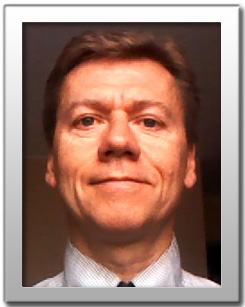 |
||||||||||
| WS.VII.1.3 TT.II.B.3 |
Daniel ALQUIER - CV University of Tours, France Laser Annealing A New Strategy For SiC Power Device Contacts |
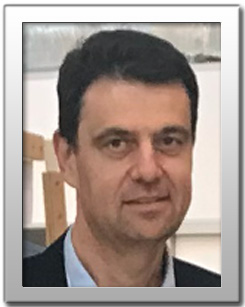 |
||||||||||
| WS.VII.1.3 TT.II.B.3 |
Roberto FORNARI - CV University of Parma Development and perspectives of Ga2O3 epitaxial layers for power electronics |
 |
||||||||||
| 14:00 - 15:30 WIDE-BANDGAP SEMICONDUCTORS AND HETEROSTRUCTURES FOR POWER AND RF ELECTRONICS 2/3 WS.VII.2 - TT.III.B |
||||||||||||
| Chair: Luca SERAVALLI, CNR-IMEM | ||||||||||||
| This session will be focused on advanced physical and electrical characterization methods for (U)WBG materials and devices. | ||||||||||||
| WS.VII.2.1 TT.III.B.1 |
Ildiko CORA - CV HUN-REN, Institute for Technical Physics and Materials Science, Hungary Advanced structural characterization of Gallium Oxide by electron microscopy |
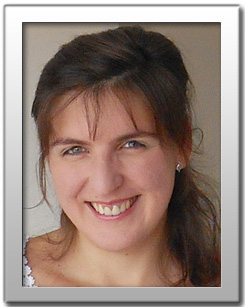 |
||||||||||
| WS.VII.2.1 TT.III.B.1 |
Giuseppe GRECO - CV CNR-IMM, Catania Recent findings on Ohmic and Schottky contacts to β-Ga2O3 |
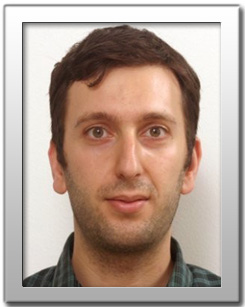 |
||||||||||
| WS.VII.2.3 TT.III.B.3 |
Manuel FREGOLENT - CV University of Padova Trapping processes in vertical GaN Trench MOSFETs: from experimental analysis to simulations |
 |
||||||||||
| WS.VII.2.3 TT.III.B.3 |
Béla PÉCZ - CV HUN-REN, Institute of Technical Physics and Materials Science, Hungary Advanced electron microscopy of WBG semiconductors and their heterostructures with 2D materials |
 |
||||||||||
| 16:00 - 17:30 WIDE-BANDGAP SEMICONDUCTORS AND HETEROSTRUCTURES FOR POWER AND RF ELECTRONICS 3/3 WS.VII.3 - TT.IV.B |
||||||||||||
| Chairs: Patrick FIORENZA, IMM-CNR | ||||||||||||
| This session will present recent developments in the integration of 2D materials (graphene, MoS2) with Nitride semiconductors. | ||||||||||||
| WS.VII.3.1 TT.IV.B.1 |
Luca SERAVALLI - CV CNR-IMEM Recent advances in the liquid precursors chemical vapor deposition (CVD) of MoS2 on SiO2 and on GaN |
 |
||||||||||
| WS.VII.3.1 TT.IV.B.1 |
Federica BONDINO - CV CNR-IOM Advanced soft-x absorption and photoemission spectroscopy of 2D materials and their heterostructures |
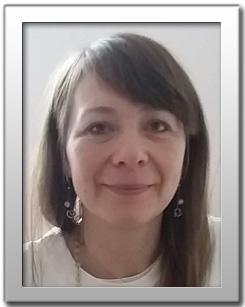 |
||||||||||
| WS.VII.3.3 TT.IV.B.3 |
Simonpietro AGNELLO - CV University of Palermo Thermally induced strain and doping of monolayer MoS2 on metal, insulator and WBG substrates |
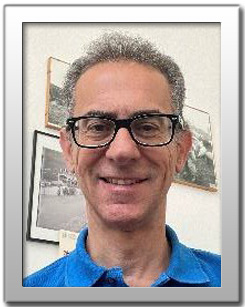 |
||||||||||
| WS.VII.3.4 TT.IV.B.4 |
Salvatore Ethan PANASCI - CV CNR-IMM, Catania Integration strategies and nanoscale electrical characterization of MoS2 on WBG semiconductors |
 |
||||||||||
| 17:45 - 19:15 BREAKOUT SESSION FAIR Data: present and future BO.1.A |
||||||||||||
| Chair: Francesca DE CHIARA, CNR-IMM Bologna | ||||||||||||
| As the field of nanotechnology advances, adopting a FAIR (Findable, Accessible, Interoperable, and Reusable) by design approach is imperative for researchers aiming to enhance data management and collaboration. By integrating FAIR principles from the outset, nanotechnology labs can ensure that their research outputs are not only compliant with data standards but also optimized for accessibility and reuse. This proactive strategy fosters greater transparency, reproducibility, and innovation in nanotechnology research, ultimately contributing to more robust and impactful scientific discoveries. By embedding FAIR principles into their workflows, researchers can drive efficiency and elevate the quality and utility of their data in the nanotechnology domain. The interactive session is open and will showcase pilot case studies with the participation of researchers from the iEntrance Research infrastructure that are enriching and advancing research activity, applying FAIR principles in their experimental protocols. Expert researchers and technologists from the iEntrance consortium will provide insights into innovative methodologies, emphasizing the integration of fair/open data standards. Researchers will discuss applications and share their experiences on how adopting FAIR principles could enhance the quality and impact of their work. | ||||||||||||
| BO.1.A.1 | Francesca DE CHIARA, CNR FAIR Data Principles in Practice: Dealing with Experimental Data |
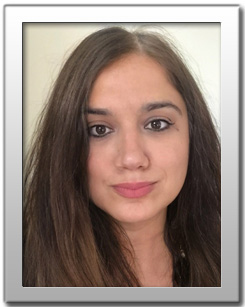 |
||||||||||
| BO.1.A.2 | Short presentations and examples by iENTRANCE@ENL project members | |||||||||||
| September 12 | ||||||||||||
| 09:00 - 10:30 Flexible energy storage devices TT.V.A |
||||||||||||
| Chair: Alessandro PEDICO, INRIM | ||||||||||||
| Wearable electronics and Internet of Things (IoT) devices are rapidly spreading in our every-day-life. Modern society is constantly expecting a noticeable development in terms of smart functions, long-term stability, and long-time outdoor operation of portable electronics. Consequently, research is rapidly pushing technological boundaries to develop new flexible and miniaturized devices as multi-purpose sensors, health monitoring systems, energy harvesting and others. Naturally, this new eco-system of wearables and IoT devices need efficient energy storage units that could work as on-demand power source. In this context, the development of new lightweight, flexible, and durable batteries and supercapacitors is urgently needed as alternative to the conventionally rigid and bulky energy storage devices currently employed. | ||||||||||||
| TT.V.A.1 | Eugenio GIBERTINI Polytechnic of Milan Flexible energy storage devices |
 |
||||||||||
| TT.V.A.2 | Davide ARCORACI Polytechnic of Turin Perspectives on Flexible Hybrid Supercapacitor Manufacturing Processes and Accessible Applications |
 |
||||||||||
| TT.V.A.3 | Gabriele PERNA - CV University of Perugia Low-cost 3D-printed piezoelecrets based on foamed PLA for energy harvesting devices |
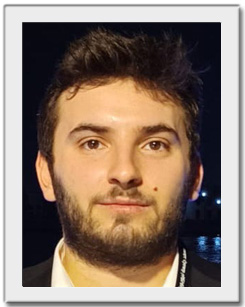 |
||||||||||
| TT.V.A.4 | Roberto SPERANZA Polytechnic of Turin Laser induced graphene and vacuum sealing encapsulation enabling flexible hybrid energy harvesting and storage devices |
 |
||||||||||
| 11:30 - 13:00 Special Event I YOUNGINNOVATION SESSION Hybrid and Composite nanomaterials for energy |
||||||||||||
| Chairs: Marino Lavorgna, CNR-IPCB | ||||||||||||
| The session will explore the cutting-edge advancements and applications of nanomaterials in the energy sector. This session aims to highlight the unique properties and potential of hybrid and composite nanomaterials in addressing the global energy challenges. The session will cover a wide range of topics, including the development of novel nanocomposites for energy storage, conversion, and harvesting applications. Attendees will gain insights into the challenges and opportunities in the fabrication and scalability of these advanced materials. Discussions will also address the environmental impact and sustainability of nanomaterial-based energy solutions. | ||||||||||||
| SE.I.10.1 TT.VI.H.1 | Introductive Keynote Pietro CATALDI - CV IIT Multifunctional and Sustainable hybrid and nanocomposite materials for electronics, sensors and energy |
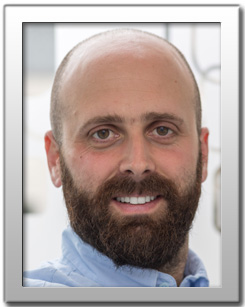 |
||||||||||
| SE.I.10.2 TT.VI.H.2 |
Pierluigi LASALA - CV University of Bari "Aldo Moro" Nanoparticles modified biohybrid photoanode for enhancing light-to-electricity conversion |
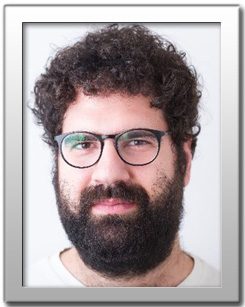 |
||||||||||
| SE.I.10.3 TT.VI.H.3 |
Roberto FIORENZA - CV University of Catania Solar-promoted photo-thermal CO2 methanation on SiC/hydrotalcites materials |
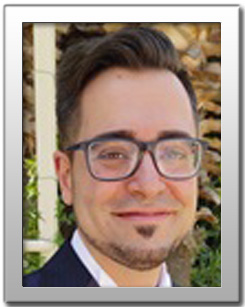 |
||||||||||
| SE.I.10.4 TT.VI.H.4 |
Pencheng YANG - CV CNR-IPCB Innovation nanocomposites-based on large-size defect-free monolayers of MXene with enhanced hydrogen barrier properties |
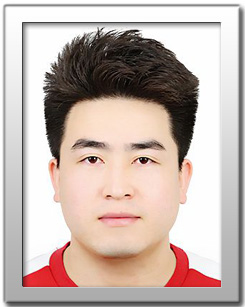 |
||||||||||
| SE.I.10.5 TT.VI.H.5 |
Matteo MASTELLONE - CV CNR-ISM Tailoring optical, photothermal and electronic properties of semiconductors and dielectrics by Laser-Induced Surface Nanotexturing |
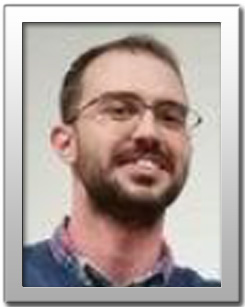 |
||||||||||
| 14:00 - 15:30 Special Event I YOUNGINNOVATION SESSION Photochemistry and Photophysics in energy conversion |
||||||||||||
| Chair: Raffaello MAZZARO, University of Bologna | ||||||||||||
| Photochemistry and photophysics play a crucial role in both natural and technological processes, offering a promising avenue for addressing the energy and climate challenges that our society is facing today. Light-induced processes can occur in either homogeneous or heterogeneous phase and can be exploited to (1) convert solar energy into chemical or electrical energy, (2) perform organic synthesis that cannot be achieved by thermal activation, and (3) remedy pollution. This session will delve into the fundamental principles and applications of photochemistry and photophysics in energy conversion, exploring their significance in addressing energy and environmental concerns with a focus on efficiency assessment, thermodynamic and spectroscopic aspects, and experimental photoreaction characterization. A detailed understanding of the photoinduced processes, coupled with in-depth material characterization, should lead to the development of a common language and shared procedures, which are essential for the advancement of research in this field. | ||||||||||||
| SE.I.12.1 TT.VII.H.1 |
Introductive Keynote Giacomo BERGAMINI - CV University of Bologna Photoactive materials and techniques for energy conversion |
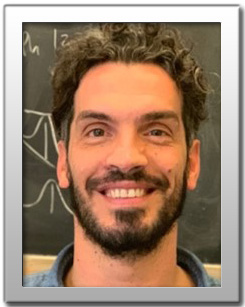 |
||||||||||
| SE.I.12.2 TT.VII.H.2 |
Soraia FLAMMINI - CV CNR-ISOF Multifunctional photoelectroactive oligothiophenes based on benzothiadiazole, thienopyrazine, and thienothiadiazole for optoelectronics and biology |
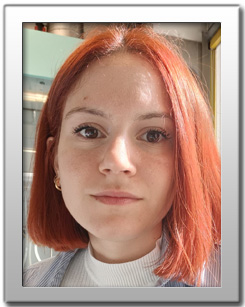 |
||||||||||
| SE.I.12.3 TT.VII.H.3 |
Mengjiao WANG - CV Polytechnic of Turin Surface chemistry modified by facile liquid phase exfoliation on 2D layered BiOI as photoanode for enhanced oxygen evolution |
 |
||||||||||
| SE.I.12.4 TT.VII.H.4 |
Niloofar HAGHSHENAS - CV University of Milan Cutting-Edge Perovskite Photocatalysts synthesized by Ultrasound: A Game-Changer in Air Pollution Control |
 |
||||||||||
| SE.I.12.5 TT.VII.H.5 |
Tommaso GIOVANNINI - CV University of Rome Tor Vergata Energy Conversion in Plasmonic Materials: an Atomistic Perspective |
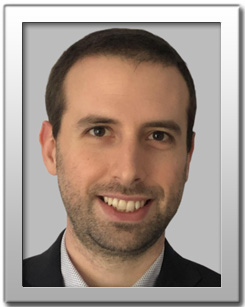 |
||||||||||
| 16:00 - 17:30 Special Event I YOUNGINNOVATION SESSION Nanomaterials for catalytic processes |
||||||||||||
| Chair: Gianluca LANDI, CNR-STEMS | ||||||||||||
| The session "Nanomaterials for Catalytic Processes" will explore the transformative impact of nanomaterials on the field of catalysis, highlighting their unique properties and applications in various catalytic processes. Attendees will gain insights into the mechanisms by which nanomaterials facilitate catalytic processes, including their surface properties, electronic structures, and interaction with reactants. The session will also delve into the practical applications of nanocatalysts in areas such as chemical synthesis, environmental remediation, energy conversion, and industrial processes. | ||||||||||||
| SE.I.14.1 TT.VIII.H.1 |
Introductive Keynote Giuseppina LUCIANI - CV University of Naples "Federico II" Nanocatalysts for sustainable energy and environment |
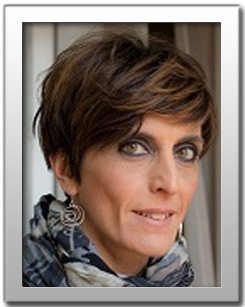 |
||||||||||
| SE.I.14.2 TT.VIII.H.2 |
Sadaf YASMEEN - CV University of Rome Tor Vergata Synthesis and Characterization of highly efficient ZnO-Sm2O3 Photocatalyst for the photocatalytic degradation of bentazon herbicide |
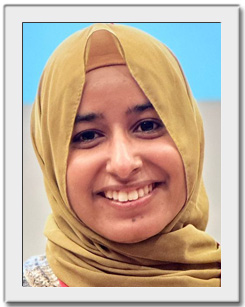 |
||||||||||
| SE.I.14.3 TT.VIII.H.3 |
Virginia VENEZIA - CV University of Naples Federico II Innovative Lignin-TiO2 Nanocomposites: Advancing Redox Materials and sustainable wastewater decontamination |
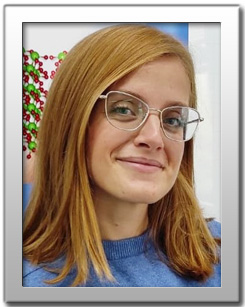 |
||||||||||
| SE.I.14.4 TT.VIII.H.4 |
Stefano SCOGNAMIGLIO Polytechnic of Turin Fe-Cu(-Ce)/HZSM-5 catalysts for simultaneous methanol and DME synthesis |
 |
||||||||||
| SE.I.14.5 TT.VIII.H.5 |
Alberto MARTIS - CV IIT From spirulina to nanoinnovation, fluorescent phycobilins to make nano catalyst |
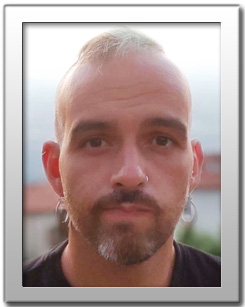 |
||||||||||
| 17:45 - 19:15 BREAKOUT SESSION Circular Economy Approaches in the Field of Materials for Energy BO.2.A |
||||||||||||
| Chair: Annukka SANTASALO-AARNIO, Aalto University | ||||||||||||
| BO.2.A.1 | Annukka SANTASALO-AARNIO - CV, Aalto University, Finland Circular Economy Approaches in the Field of Materials for Energy |
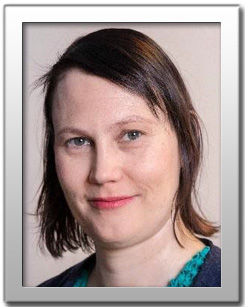 |
||||||||||
| BO.2.A.2 | Simone QUARANTA - CV CNR ISMN Inexpensive/environmentally friendly nanostructured MnO2 recovered from Amazon and Italian mining tailings as electrode materials for rechargeable batteries |
 |
||||||||||
| BO.2.A.3 | Vishal SHRIVASTAV Regional Centre of Advanced Technologies and Materials, Czech Republic Microwave activated mixed biowastes derived porous carbon-based electrode for all-solid-state symmetrical supercapacitors |
 |
||||||||||
| BO.2.A.4 | Giorgio CELORIA - CV University of Piemonte Orientale A. Avogadro Rice husk derived materials for environmental applications |
 |
||||||||||
| September 13 | ||||||||||||
| 09:00 - 10:30 Machine learning approaches in materials science TT.IX.E |
||||||||||||
| Chair: Pietro ASINARI, INRIM | ||||||||||||
| This session delves into the transformative impact of machine learning (ML) on materials science. As the complexity of materials and the vastness of experimental data grow, ML offers powerful tools for accelerating the discovery, design, and optimization of new materials. The session will explore various ML techniques, including supervised and unsupervised learning, neural networks, and reinforcement learning, and their application in predicting material properties, discovering novel compounds, and optimizing manufacturing processes. Case studies highlighting successful ML-driven advancements in areas such as nanomaterials, polymers, and energy storage will be discussed. Attendees will gain insights into the integration of ML with traditional experimental and computational methods, as well as the challenges and future directions in this rapidly evolving field. | ||||||||||||
| TT.IX.E.1 | Massimo BOCUS - CV Center for Molecular Modeling, Ghent University Machine learning potentials to bridge the gap between theory and experiments in zeolite catalysis |
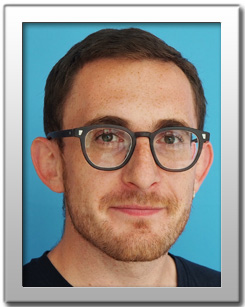 |
||||||||||
| TT.IX.E.2 | Paolo DE ANGELIS Polytechnic of Turin Investigating Ion Transport in Solid Electrolyte Interfaces with Advanced Reactive Force Fields |
 |
||||||||||
| TT.IX.E.3 | Francesco MAMBRETTI IIT How does structural disorder impact heterogeneous catalysts? Ammonia decomposition on ionic crystals |
 |
||||||||||
| TT.IX.E.4 | Umberto RAUCCI IIT Revealing the Dynamic Behavior of Heterogeneous Catalysts via Machine Learning-Driven Molecular Dynamicss |
 |
||||||||||
| 11:30 - 13:00 CHARACTERIZATION OF NANOMATERIALS TT.X.E |
||||||||||||
| Chair: to be defined | ||||||||||||
| This session explores the critical role of nanomaterial characterization in advancing materials science. With nanomaterials displaying unique properties that differ significantly from their bulk counterparts, precise characterization is essential for unlocking their potential in various applications. Participants will gain insights into the challenges and solutions associated with characterizing materials at the nanoscale, including resolution limitations, sample preparation, and data analysis. Case studies will demonstrate how these characterization techniques are used to drive innovation in fields such as electronics, biotechnology, and energy materials, ultimately enhancing the development and application of advanced nanomaterials in materials science. | ||||||||||||
| TT.X.E.1 | Introductive Keynote Michela ALFE - CV CNR STEMS How easy is it to produce and characterize carbon-based nanomaterials from waste? Insights and future perspectives |
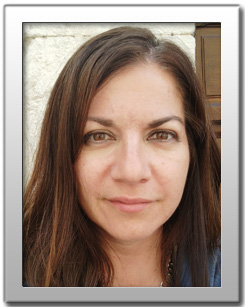 |
||||||||||
| TT.X.E.2 | Alessio OCCHICONE - CV CNT-STEMS Transforming red mud waste into valuable nano-magnetic materials: a comprehensive study |
|||||||||||
| TT.X.E.3 | Luigi RIBOTTA - CV INRIM 3D reconstruction of AFM tip by using known tip characterizers |
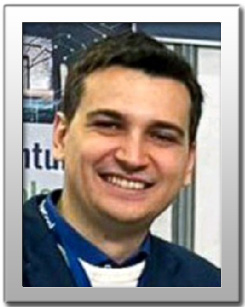 |
||||||||||
| TT.X.E.4 | Giacomo SPISNI Polytechnic of Turin Electrospun manganese oxide nanostructured layer for alkaline oxygen reduction reaction catalysis |
 |
||||||||||
| TT.X.E.5 | Eleonora BOLLI - CV CNR-ISM Advancements in Defect-Engineered Material Characterization: A TERS Analysis of Black Diamond |
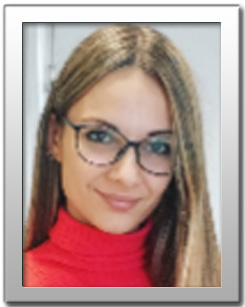 |
||||||||||
| Joint Event II OPEN INNOVATION & OPEN SCIENCE Infrastructures VII Edition |
||||||||||||
| Chairs: Vittorio MORANDI, CNR-ISMN and Marco ROSSI, Sapienza University of Rome | ||||||||||||
| In collaboration with: | ||||||||||||
 |
||||||||||||
|
With the growing interest generated by the previous six editions of "Open Innovation and Open Science," the event is once again being organized as part of NanoInnovation 2024, marking its sixth edition. Since the 2022 edition, it was decided, for continuity, to retain the same title, but the contents and aims of the event have been revised and reconfigured to thoughtfully align with the scenarios presented in the National Recovery and Resilience Plan (PNRR), emphasizing sustainability, localized re-industrialization, reimagining globalization policies, and addressing the evolving needs of university and post-graduate training programs. In particular, the current 2024 edition will be mainly focused on the actions regarding the project for the implementation of the Research Infrastructures (RIs) and of the Infrastructure for Innovation, that are strategic structural elements of the PNRR, as they have activated an investment plan that has no precedent in the Italian research landscape. PNRR represents an unique opportunity to modernize and expand existing laboratories as well as to build new laboratories, and, at the same time, it will also result in an huge responsibility for all those laboratories, to develop cutting-edge projects in strategic sectors such as material development, quantum technologies, digital and ecological transition, and to realize a sustainable, effective and impactful ecosystem at the National and European level. Moreover, the policies for the use of resources deriving from the application of Recovery Funds will make the relationship between public and private research even more crucial and strategic, with a focus on the valorization of knowledge which will represent a key factor for a concrete and stable economic recovery. In such a context, a key element of the PNRR action on RIs is the commitment to make available the result of these large investments – laboratories and associated know-how – to a wide audience, including scientific and business audiences, and also to create training chains useful for filling skills gaps in cutting-edge sectors. The ability to identify and exploit network skills and knowledge, to manage rapid and complex cooperative processes, to promote inclusive and multi-stakeholder processes to increase the social impact of innovation, to aggregate multidisciplinary skills and knowledge, are increasingly crucial factors for the success of the ongoing projects on RIs. In the last years, also before the pandemic, the innovation processes have undergone profound changes. The principles of Open Innovation, as a response to the changes in the competitive, technological, scientific environment and the entire approach to research pursued at a national or supranational level according to the principles of Open Science, demonstrate how much the spaces and places of innovation today require careful consideration of the new forms and organizational mechanisms that permeate the action of public and private actors operating in increasingly dynamic contexts, such as those that are determined by the effect of technological convergence, digital transition and the progressive blurring of the boundaries that once allowed to clearly distinguish the various industrial sectors. The interweaving of relationships between a multiplicity of actors (private and public companies, government bodies and authorities, public and private research bodies, etc.), giving rise to particularly complex networked systems, determines the generation of new organizational forms with a "hybrid nature" (strategic European and National initiatives, strategic alliances, partnerships, joint ventures, consortia, temporary entrepreneurial formations, supply chain systems, etc.) which are based on hybrid mechanisms of regulation and management of relations (market, hierarchy, clan, trust), whose understanding and correct application, of a contextual nature with respect to the needs of the various actors participating in the innovative projects, contributes significantly to determining their effectiveness and efficiency. The 7th edition of Open Innovation and Open Science is structured 4 sessions. During these sessions some of the main research organizations, universities and large national companies, SMEs, national professional associations and territorial bodies will discuss models and experiences related to: |
||||||||||||
| 09:00 - 10:30 Technology Transfer and Innovation Policies for a Sustainable Research JE.II.1 |
||||||||||||
| Chair: Sabrina CONOCI, Distretto Tecnologico Sicilia Micro e Nano Sistemi | ||||||||||||
| This session explores the essential policies and frameworks that drive technology transfer and innovation, emphasizing sustainability within research. Keynote speakers from leading public and private organizations, universities, and major industries will examine the creation and sustainability of research and technological infrastructures. The discussion, led by experts, will highlight best practices, regulatory considerations, and strategic initiatives crucial for ensuring that cutting-edge research translates into sustainable industrial innovations. Attendees will gain a comprehensive understanding of how these policies support a cohesive, sustainable technological ecosystem, and how they can be effectively implemented to foster long-term industry-wide advancement. | ||||||||||||
| JE.II.1.1 | Giuseppe BARBIERI ENEA, Responsabile della Divisione Tecnologie e materiali per l'industria Manifatturiera Sostenibile ENEA, le opportunità di sviluppo e la creazione di nuove infrastrutture di ricerca offerte dal PNRR |
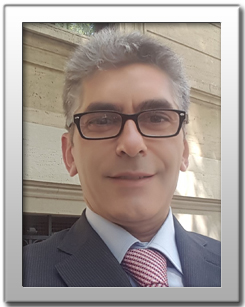 |
||||||||||
| JE.II.1.2 | Cesare LOBASCIO - CV Thales Alenia Space, Space Exploration & Science Innovation Lead and Senior Expert Life Support & Habitability Disruptive innovation for New Space Exploration Challenges |
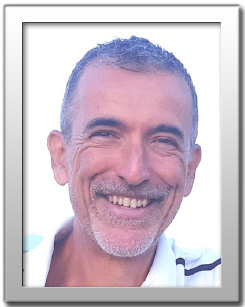 |
||||||||||
| JE.II.1.3 | Rosaria RINALDI University of Salento, Vice-Rector for Technology Transfer Green and Circular Chemistry for the Sustainable Production of Nano-Therapeutic Materials |
 |
||||||||||
| JE.II.1.4 | Alessandro GARIBBO LEONARDO, Head of Universities and Research Centers Coordination Partnership, infrastrutture e reti per la ricerca: l’esperienza di Leonardo |
 |
||||||||||
| JE.II.1.5 | Michele MUCCINI CNR-ISMN e MISTER Smart Innovation Mister Smart Innovation and the CNR Bologna Technopole: an hands on experience for research valorization and public-private collaboration |
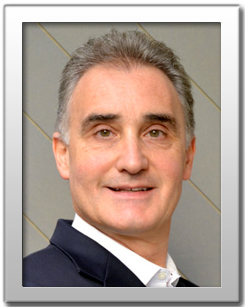 |
||||||||||
| JE.II.1.6 | Lorenzo ROSSI - CV IIT, Intellectual Property Manager Technology Transfer: Impact, Goals, People and Resources |
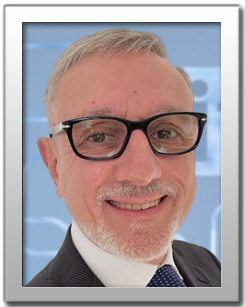 |
||||||||||
| 11:30 - 13:00 IM4EU: Advanced Materials for Industrial Leadership - come diventare protagonisti JE.II.2 - TT.X.A |
||||||||||||
| Chair: Marco FALZETTI, APRE | ||||||||||||
| Le public-private partnership sono riconosciute come uno strumento essenziale per trasferire conoscenza e ricerca al mercato. I materiali avanzati sono alla base delle catene del valore di molteplici settori applicativi e sono sempre più un fattore strategico per garantire l’autonomia e la competitività delle imprese europee. Collaborare e creare sinergie tra tutti gli stati membri, le industrie gli attori della ricerca è necessario per sfruttare al meglio gli investimenti attuali e futuri. L’Italia e le sue industrie devono giocare un ruolo importante in questa sfida. Con la pubblicazione il 27 febbraio 2024 della sua comunicazione su Advanced Materials for Industrial Leadership, la Commissione ha segnato un punto di arrivo e uno di partenza. L’arrivo è individuato da un percorso che negli ultimi due anni ha accompagnato la Commissione attraverso un intenso confronto con tutti i portatori di interesse al fine di costruire le migliori condizioni per una rinnovata attenzione sulla R&I sui materiali e sul loro fondamentale ruolo di abilitatori di praticamente tutte le sfide tecnologiche del futuro. La partenza, perché si stanno attivando iniziative che coinvolgono tutte le comunità di riferimento, accademia, ricerca, industria, per rendere operative le strategie delineate nella Comunicazione. Durante l’evento la Direttrice della Direzione Prosperity della Direzione Generale Ricerca, illustrerà come procede l’impegno della Commissione Europea su questo dossier. A valle di questo, estenderemo il dialogo a figure di rilievo del contesto istituzionale italiano e del mondo dell’industria e della ricerca, per capire come il sistema nazionale si stia organizzando per cogliere al meglio, e da protagonisti, le future opportunità su questo tema, a partire dal coinvolgimento nel nuovo Partenariato sui Materiali Innovativi che vedrà la luce nella seconda metà dell’anno. Vi chiediamo gentilmente di accreditarvi all'evento tramite la compilazione del form | ||||||||||||
| JE.II.2.1 TT.X.A.1 |
Marco FALZETTI Direttore APRE e Chair EuMaT Introduction |
 |
||||||||||
| JE.II.2.2 TT.X.A.2 |
Key note Speaker Maria Cristina RUSSO Direttrice della Direzione Prosperity della DG- RTD della Commissione Europea L’innovazione nei Materiali - dove sta andando la Commissione Europea |
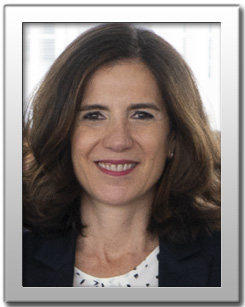 |
||||||||||
| JE.II.2.3 TT.X.A.3 |
Maria Cristina RUSSO & Marco FALZETTI Dialogo: Verso il nuovo Partenariato sui Materiali Avanzati IM4EU |
 |
 |
|||||||||
| ROUND TABLE Essere protagonisti delle future sfide sui Materiali Innovativi |
||||||||||||
| Moderator: Tullio TOLIO, Esperto alla Configurazione di Programma del Cluster 4 di Horizon Europe, Politecnico di Milano | ||||||||||||
| PANELISTS | ||||||||||||
| Stefano FABRIS Direttore del Dipartimento Scienze fisiche e tecnologie della materia – CNR |
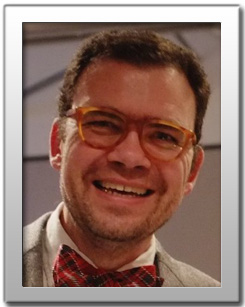 |
|||||||||||
| Francesca GALLI Ufficio di Gabinetto MUR |
 |
|||||||||||
| Luca DE ANGELIS Direttore della Direzione generale per le nuove tecnologie abilitanti, MIMIT |
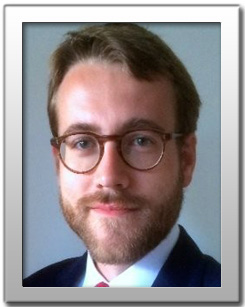 |
|||||||||||
| Nicoletta AMODIO Responsabile Industria e Innovazione Confindustria |
 |
|||||||||||
| Luigi NICOLAIS Prof. Emerito Università Federico II |
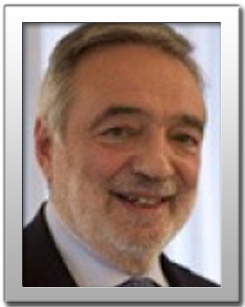 |
|||||||||||
| QUESTION & ANSWER | ||||||||||||
| 14:00 - 15:30 ROUND TABLE Research Infrastructure and Ecosystem within and beyond PNRR: Open Science, Open Innovation, and Higher Education 1/2 JE.II.3 |
||||||||||||
| Chair: Alfredo PICANO, iENTRANCE@ENL Manager & CNR | ||||||||||||
| JE.II.3.1 | Ennio CAPRIA ESFR, Deputy Head of Business Development, France Ecosystems and Infrastructures: The example of Grenoble |
 |
||||||||||
| JE.II.3.2 | Anna TAMPIERI ISSMC-CNR & President Eureka! Venture SGR How to navigate the stormy sea from research to innovation to meet the market needs, using venture capital tools |
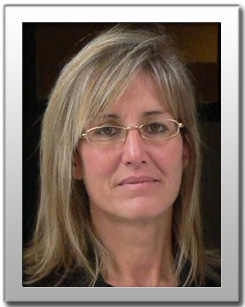 |
||||||||||
| JE.II.3.3 | Marina SILVERII Executive Director at ART-ER & Vice-President ECOSISTER Foundation ECOSISTER: The Emilia-Romagna Region's ecosystem for sustainable transition |
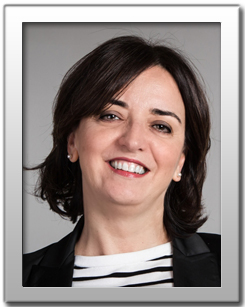 |
||||||||||
| JE.II.3.4 | Franco FOSSATI Fondazione Rome Technopole, Direttore Scientifico Drivers of Competitive Advantage: Education, Innovation, and Entrepreneurship in Open Ecosystems |
 |
||||||||||
| JE.II.3.5 | Anastasia DOTOLO HUB NODES SCARL, Project Manager NODES: The North-West ecosystem for digital and sustainable transition |
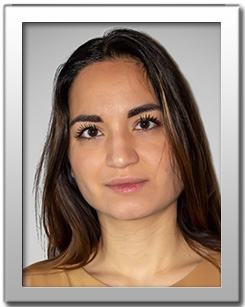 |
||||||||||
| 16:00 - 17:30 ROUND TABLE Research Infrastructure and Ecosystem within and beyond PNRR: Open Science, Open Innovation, and Higher Education 2/2 JE.II.4 |
||||||||||||
| Moderators: Vittorio MORANDI, CNR & Marco ROSSI, Sapienza University of Rome | ||||||||||||
| PANELISTS | ||||||||||||
| Panelist in definiton Lazio Innova |
 |
|||||||||||
| Panelist in definiton Regione Lazio |
 |
|||||||||||
| Panelist in definiton Regione Piemonte |
 |
|||||||||||
| Antonio ANDRETTA Klopman International, LCA Manager |
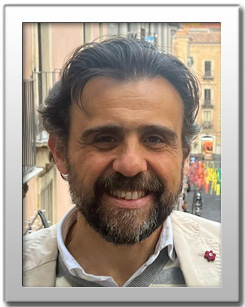 |
|||||||||||
| Massimo BERSANI FBK, Materials and Topologies for Sensors and Devices (MTDS) Unit Leader |
 |
|||||||||||
| Ennio CAPRIA ESRF, Deputy Head of Business Development, France |
 |
|||||||||||
| Massimo CARNELOS (to be confirmed) MAECI, Capo dell'Ufficio Innovazione, start-up e spazio - DGSP Uff. XI |
 |
|||||||||||
| Vincenzo COLLA Regione Emilia Romagna, Assessore Sviluppo Economico e Green Economy, Lavoro, Formazione, Relazioni Internazionali |
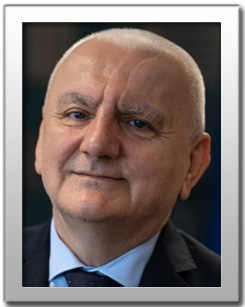 |
|||||||||||
| Marco CRESCENZI ISS, Core Facilities, Director |
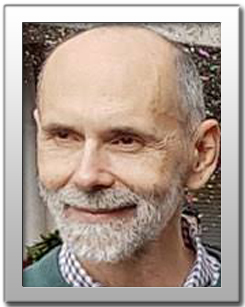 |
|||||||||||
| Alessandro GARIBBO LEONARDO, Head of Universities and Research Centers Coordination |
 |
|||||||||||
| Rosaria RINALDI University of Salento, Vice-Rector for Technology Transfer |
 |
|||||||||||
| Anna TAMPIERI ISSMC-CNR & President Eureka! Venture SGR |
 |
|||||||||||





